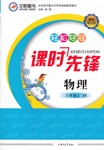题目内容
This week is National Volunteer Week, a time for the Canadian Red Cross to recognize our dedicated (有奉献精神的) volunteers who devote their time and talents from coast to coast. Over the course of the week we will use this blog to share stories about our volunteers and the amazing work they do --- a small part of the outstanding individuals across the country.
Take Saskatchewan for example. Last year that province was hit by wide-spread flooding, a hurricane and forest fires. Canadian Red Cross staff and volunteers went to work right away and helped more than 2,100 adults and 775 children recover the basic necessities of life.
It’s important to share stories from volunteers to truly appreciate what they do. Christine Hoffman is a Disaster Response Volunteer in Canadian Red Cross in Saskatchewan. She’s a veteran Red Crosser for about 16 years. Still nothing could have prepared her for the call she took in the Recovery Center last year in response to flooding in Maple Greek. This story is best told in her own words. This is what she said:
“I will never forget the first phone call I took in the Recovery Centre. A young man called asking what services Red Cross was offering in town. As we were talking, he told me he had a rope in his backyard but he thought he would be using it for other reasons. My heart stopped. I told him to come to see us so we could work together on a plan to improve his situation. He came in a little while later. Nearly two hours later he left standing straight up with tear- filled eyes. He thanked me for convincing him to come in. His home had been destroyed, but together we put together a plan and he was eventually able to move back into his own home.”
During National Volunteer Week 2011, let’s thank Christine, and the many other volunteers like her. Thanks for making us proud!
- 1.
According to the second paragraph, Canadian Red Cross’ action is ______
- A.slow
- B.quick
- C.helpless
- D.disappointing
- A.
- 2.
Which of the following is closet in meaning to the underlined word “veteran” in the third paragraph?
- A.Careless
- B.Experienced
- C.Unskillful
- D.Optimistic
- A.
- 3.
The underlined words in the forth paragraph expressed Christine Hoffman’s feeling of ____
- A.excitement
- B.anger
- C.happiness
- D.nervousness
- A.
- 4.
What can we infer from what Christine Hoffman said?
- A.The young man felt sad for Christine Hoffman because of her poor experience
- B.The young man was persuaded by Christine Hoffman and decided to live on
- C.Christine Hoffman made the young man sad and he cried
- D.Christine Hoffman offered to give the young man a little money to help him
- A.
- 5.
What is the text mainly about?
- A.How to become a volunteer
- B.An excellent volunteer and her family
- C.Volunteers and their amazing work
- D.What the Canadian Red Cross does
- A.
BBDBC
试题分析:这篇文章讲的是志愿者和他们令人惊叹的工作,通过Christine Hoffman的例子,说明自愿者的工作是很有意义的。
1.细节题:从第二段的句子:Last year that province was hit by wide-spread flooding, a hurricane and forest fires. Canadian Red Cross staff and volunteers went to work right away 可知红十字会的工作是很迅速的,选B
2.猜词题:从后面的for about 16 years 可知Christine Hoffman是有经验的红十字会员。veteran 和experienced意思相近,选B
3.推理题:从前面的句子:As we were talking, he told me he had a rope in his backyard but he thought he would be using it for other reasons.可知这个打电话的人想要自杀,可知Christine Hoffman有点紧张。选D
4.推理题:从第四段的句子:He came in a little while later. Nearly two hours later he left standing straight up with tear- filled eyes. He thanked me for convincing him to come in. 可知Christine Hoffman说服这个年轻人继续活下去,选B
5.主旨题:从第一段的句子:Over the course of the week we will use this blog to share stories about our volunteers and the amazing work they do 可知这篇文章讲的是志愿者和他们令人惊叹的工作,选C
考点:考查社会生活类短文
试题分析:这篇文章讲的是志愿者和他们令人惊叹的工作,通过Christine Hoffman的例子,说明自愿者的工作是很有意义的。
1.细节题:从第二段的句子:Last year that province was hit by wide-spread flooding, a hurricane and forest fires. Canadian Red Cross staff and volunteers went to work right away 可知红十字会的工作是很迅速的,选B
2.猜词题:从后面的for about 16 years 可知Christine Hoffman是有经验的红十字会员。veteran 和experienced意思相近,选B
3.推理题:从前面的句子:As we were talking, he told me he had a rope in his backyard but he thought he would be using it for other reasons.可知这个打电话的人想要自杀,可知Christine Hoffman有点紧张。选D
4.推理题:从第四段的句子:He came in a little while later. Nearly two hours later he left standing straight up with tear- filled eyes. He thanked me for convincing him to come in. 可知Christine Hoffman说服这个年轻人继续活下去,选B
5.主旨题:从第一段的句子:Over the course of the week we will use this blog to share stories about our volunteers and the amazing work they do 可知这篇文章讲的是志愿者和他们令人惊叹的工作,选C
考点:考查社会生活类短文

练习册系列答案
 文敬图书课时先锋系列答案
文敬图书课时先锋系列答案
相关题目
-----I’m afraid I can’t finish the novel you lent me this week.
-----___________.
| A.Please go ahead | B.That’s all right | C.Take your time | D.Not at all |